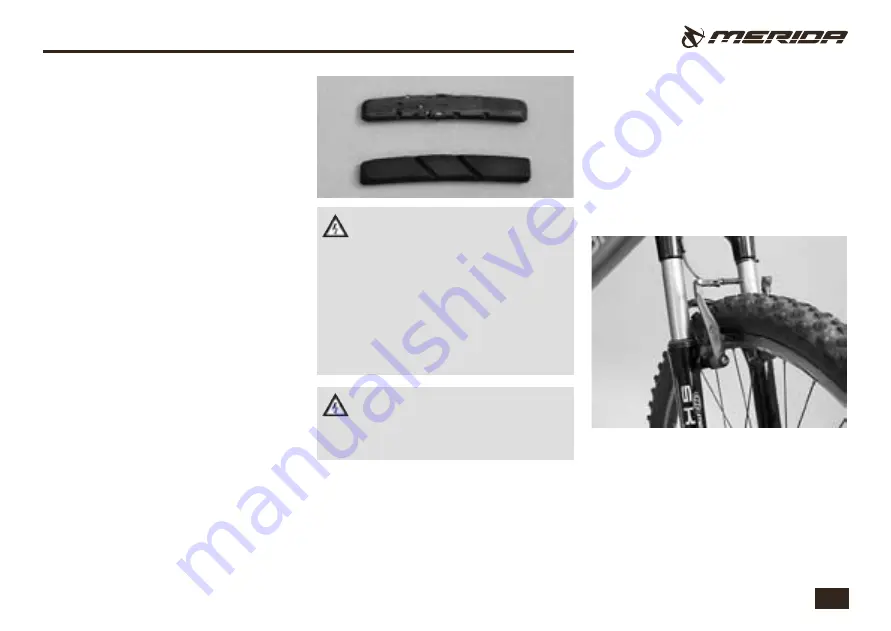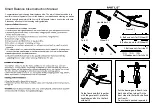
9. Rim brakes (general)
The friction generated by braking causes
wear to the brake pads as well as to the rims.
Frequent rides in the rain and dirt encour-
age wear on both engaging surfaces. Once
the abrasion of the rim has reached a certain
critical point, the rim can rupture under the
tire pressure. This can make the wheel jam
or the tire burst, both of which can cause a
crash! See your MERIDA dealer and ask him
to examine the remaining thickness of the
rims at the latest when you are through your
second set of brake pads. Professionals have
a special measuring device for determining
the remaining thickness of the rims.
Some rims are equipped with an all around
groove or such like which serve as wear indi-
cator. In case parts of this wear indicator are
no longer visible, the rim must be replaced.
Be aware of longer stopping distan-
ces when riding in the rain! When
replacing brake pads, be sure to only use
brake pads that bear the appropriate mark
and match your rim.
Your MERIDA dealer will be pleased to
help you. Ensure that braking surfaces are
absolutely free of wax, grease and oil. Have
your rims regularly inspected and measured
by an expert.
Brake cables which are damaged, e.g.
frayed, should be replaced immedi-
ately, as they can otherwise fail in a critical
moment, possibly causing a crash.
9. The brake system
9. Checking, adjusting and
synchronizing V-brakes
Common cantilever and V-brake designs have
two brake arms mounted separately on either
side of the rim. When pulling the brake lever,
both arms are contracted by the cable, the
pads touch the rim.
















































